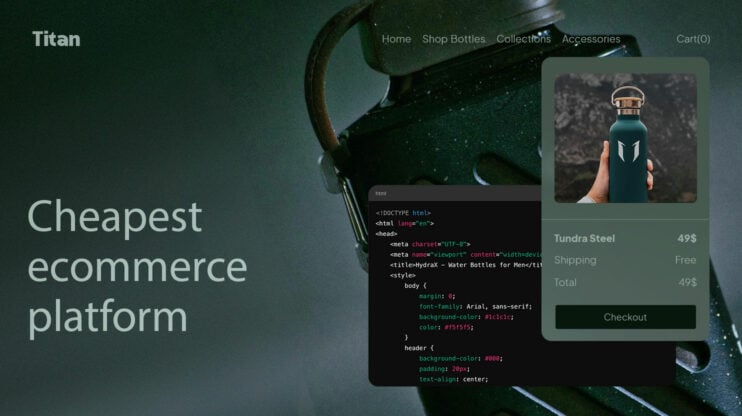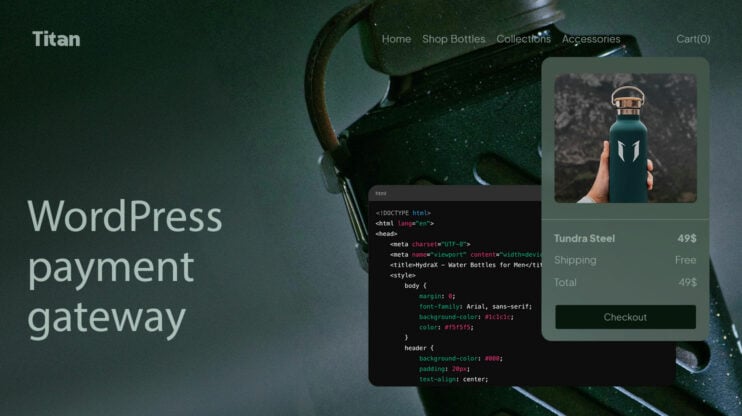Online shopping has changed the game for how we buy groceries, and grocery ecommerce platforms are the reason for this shift. These platforms are making it easier than ever to stock up on essentials, offering seamless user experiences and fast delivery options.
As the grocery market continues to shift online, companies are competing to introduce new features like subscription services, sustainability-focused practices, and AI-powered recommendations. With growing demand for convenience and innovation, this space is buzzing with opportunities for businesses to make their mark and meet the needs of today’s shoppers. In this article, we’ll dive into 23 platforms that are redefining shopping for food ingredients.
FAQ
What are the top platforms for online groceries?
How to choose a grocery delivery service?
What features should a grocery site have?
Are there free templates for grocery websites?
How do I start an online grocery business?
What are the latest trends in grocery shopping?
Which apps are best for grocery delivery?
What makes a grocery platform successful?

Create your online store in minutes!
Looking to sell online? Develop and launch your store with 10Web AI Ecommerce Website Builder.
Understanding grocery ecommerce platforms
Grocery ecommerce platforms have changed how people shop for food and household items. These online systems let you buy groceries from your computer or phone.
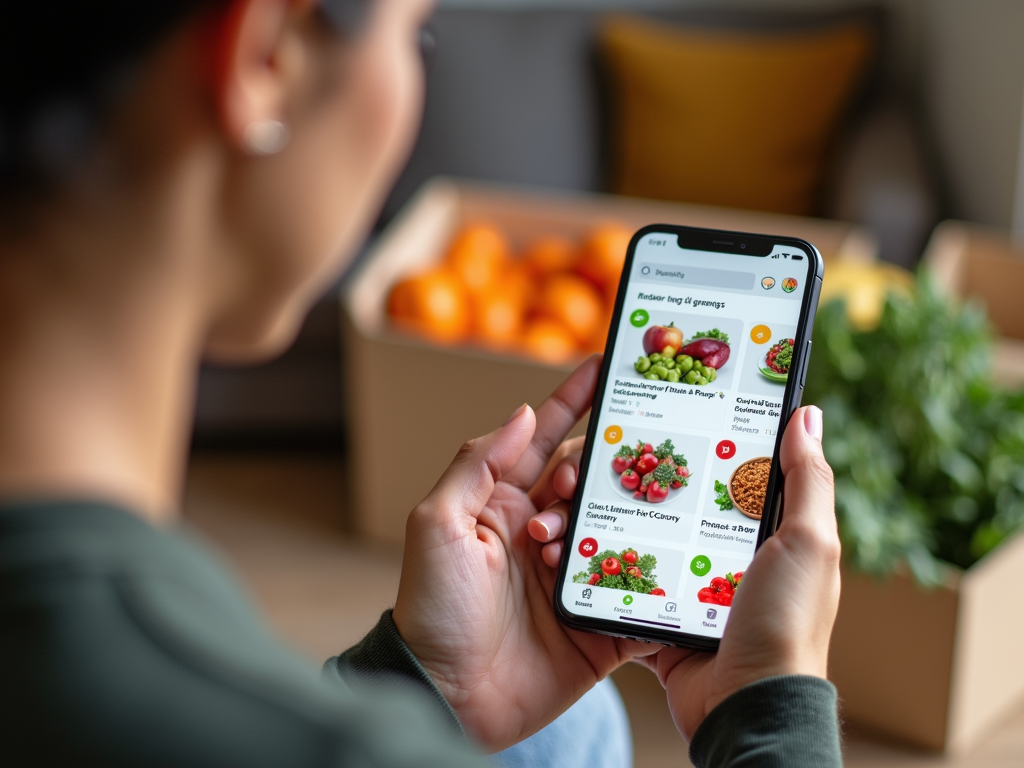
The rise of grocery ecommerce
More people are buying groceries online. This trend grew quickly during the 2020 Covid lockdown. Now, it’s a regular part of shopping for lots of folks.
Online grocery shopping saves time. You can order from home or work without driving to a store. Many platforms offer same-day or next-day delivery, some have the option to pick up orders at the store. Grocery ecommerce works for all kinds of shoppers. Busy parents, office workers, and seniors find it helpful. You can shop any time, day or night.
Key features of a successful platform
Good grocery ecommerce platforms are easy to use; they have clear product photos and descriptions. You can search for items or browse by category.
Many platforms remember what you buy, which makes reordering simple. Additionally, they often suggest items based on your past orders.
Fresh food quality is key. Good platforms have systems to keep produce, meat, and dairy fresh. They use special packaging and quick delivery.
Pricing and deals are important too. For instance, many online grocers offer sales and coupons like regular stores, while others have membership programs with extra perks.
Improving user experience
A good grocery ecommerce platform makes online shopping easy and enjoyable, which helps customers find what they need quickly and works well on phones and computers.
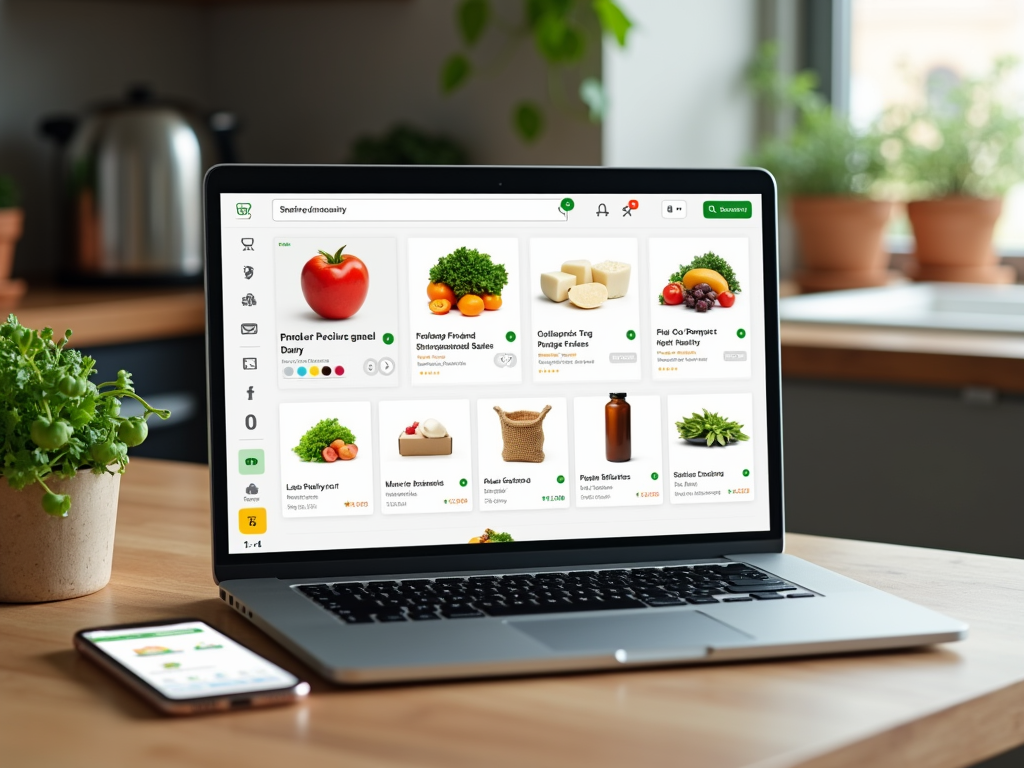
Navigation and usability
A well-organized menu is key for grocery ecommerce sites. Group items into clear categories like produce, dairy, or pantry staples. Use search filters to let shoppers narrow down choices by price, brand, or dietary needs.
Add a search bar that understands common terms and misspellings. Suggest related items as customers shop to help them find everything they need. Show popular items and deals on the homepage.
Make checkout simple with guest options and save payment info for repeat customers. Offer pickup and delivery choices with clear time slots. Let shoppers easily change or cancel orders before they ship.
Mobile optimization
Most people now shop on phones, so your grocery site must work well on small screens. Use big, tappable buttons and text that’s easy to read. So, make product photos zoomable to check details.
Speed is important for mobile shoppers. Try to use a responsive design that loads fast on all devices and cut down on pop-ups or large images that slow things down.
Add features like barcode scanning to quickly add items from home. Let customers make shopping lists in your app to use online or in-store. Additionally, sync accounts across devices so people can start orders on phones and finish on computers.

Create your online store in minutes!
Looking to sell online? Develop and launch your store with 10Web AI Ecommerce Website Builder.
Security and payment integration
Grocery ecommerce platforms need strong security measures and smooth payment options. These features keep customers safe and make shopping easy.
Guaranteeing user privacy
Protecting user data is key for grocery ecommerce sites. Use HTTPS to encrypt all data sent between users and the site, this stops hackers from stealing info. Additionally, set up firewalls to block unauthorized access. Use strong passwords and two-factor authentication for user accounts.
Store payment details securely. Don’t keep full credit card numbers and use tokenization to replace card info with unique codes. Also, follow PCI DSS rules for handling payment data and run regular security scans to find weak spots.
Train staff on data protection and limit who can see customer info. Have a plan ready if a data breach happens. Tell users how you keep their data safe. This builds trust.
Diverse payment options
Give shoppers many ways to pay. Accept major credit cards like Visa and Mastercard. Add digital wallets such as PayPal, Apple Pay, and Google Pay. These are fast and easy to use. Some customers like buy now, pay later options. On the other hand, consider adding services like Afterpay or Klarna.
For older shoppers, keep options for cash on delivery or checks. Gift cards are good for presents. Also, let people save payment methods for faster checkout next time, but always ask before saving info.
Make sure your payment system works on all devices. Test it on phones, tablets, and computers. The checkout page should be simple and load fast. Show clear error messages if something goes wrong. Give an order confirmation right away.
23 grocery ecommerce platforms
Here are 23 grocery ecommerce platforms that have made a significant impact in the industry. Each one offers distinct features and capabilities, tailored to meet the demands of modern grocery shopping.
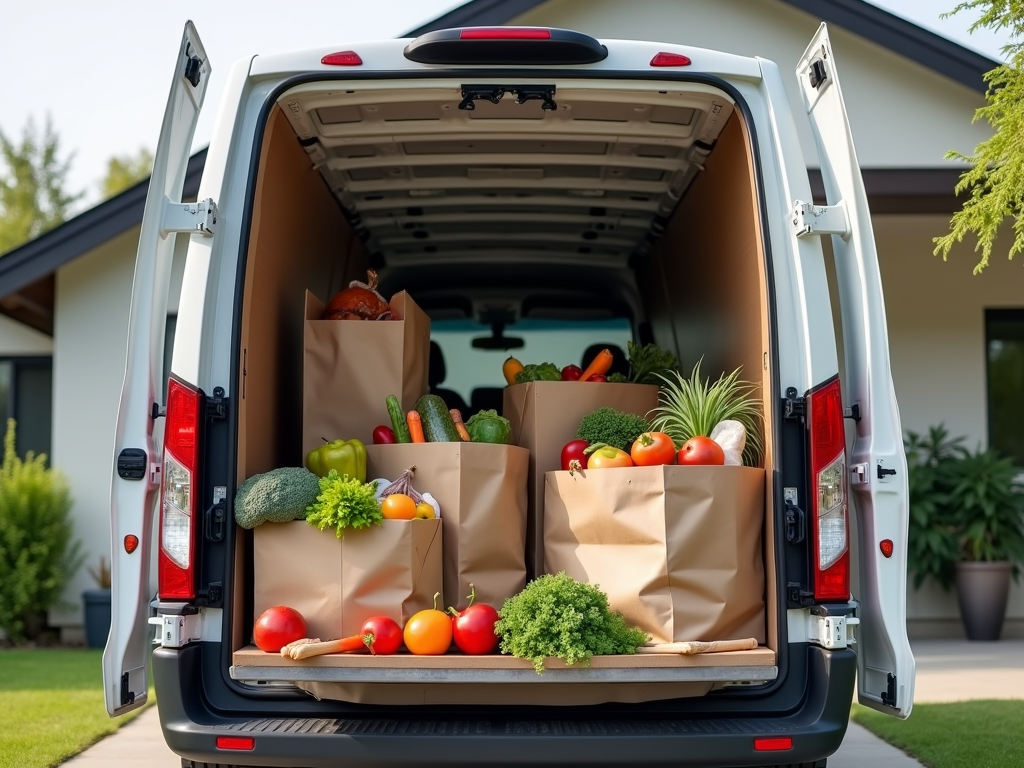
1. Amazon Fresh
Amazon Fresh is a grocery delivery and pickup service. You can order food and household items online or through the Amazon app and the service brings groceries right to your door or lets you pick them up at a store.
Amazon Fresh started as a Prime member benefit. Now it’s open to all customers in areas where it’s available. This change makes it easier for more people to get groceries.
The stores use some cool tech. You can use Dash Carts to skip the checkout line. These smart carts track what you put in and charge you when you leave. There are also Ask Alexa stations where you can ask questions about products.
Amazon Fresh focuses on fresh food and everyday items. You can find produce, meat, dairy, and pantry staples, and also they sell some prepared meals and Amazon-brand products.
Prices at Amazon Fresh are pretty good. They try to keep costs low to compete with other grocery stores. You might find some good deals, especially on Amazon’s own brands.
| Pros | Cons |
| Convenient delivery and pickup | Not available everywhere |
| Cool tech in stores | Still working on basics of grocery retail |
| Good prices | Limited selection compared to some stores |
2. Instacart
Instacart is a major player in the grocery ecommerce space. The company offers a platform that connects customers with local stores for online grocery shopping and delivery.
Instacart partners with many popular grocery chains and retailers. This gives you access to a wide selection of products from stores you already know and trust and shop from multiple stores in a single order.
The service is easy to use; you simply browse items, add them to your cart, and choose a delivery time. Then, a personal shopper picks up and delivers your groceries.
One big plus is the convenience. You can get groceries delivered to your door in as little as an hour, which saves you time and hassle, especially if you’re busy or can’t easily get to the store.
On the downside, there are extra fees involved. You’ll pay for delivery and service fees on top of your grocery bill. Prices for some items may also be higher than in-store.
Instacart offers both pay-per-order and subscription options. The Instacart Express membership gives you free delivery on larger orders for a monthly or yearly fee.
We picked Instacart because of its wide availability and partnerships with major retailers. It’s a solid choice if you want the flexibility to shop from multiple stores.
Instacart works well for busy individuals and families who value convenience over cost savings. It’s also good for those who have trouble getting to physical stores.
| Pros | Cons |
| Wide selection of stores | Extra fees for delivery and service |
| Fast delivery options | Some items may cost more than in-store |
| User-friendly app and website | Quality of shopper service can vary |
3. Walmart grocery
Walmart is a major player in the grocery ecommerce market. The retail giant offers online grocery shopping and delivery services to customers across the United States. You can order groceries through Walmart’s website or mobile app.
Walmart’s grocery platform lets you browse products, create shopping lists, and schedule pickup or delivery times. You can choose from a wide range of fresh produce, meat, dairy, pantry staples, and household items.
One big plus is Walmart’s competitive pricing on groceries. The company often matches or beats prices at other supermarkets, and also offers grocery pickup for free at many locations.
Walmart has expanded its delivery options in recent years. You can now get same-day delivery in many areas. Some locations even offer early morning delivery starting at 6 AM.
On the downside, product availability can sometimes be limited compared to shopping in-store. Substitutions may occur if items are out of stock.
Walmart’s grocery ecommerce is priced affordably, with low or no delivery fees in many cases. The service is a good fit for budget-conscious shoppers who want convenient online ordering.
| Pros | Cons |
| Competitive pricing | Limited product selection at times |
| Free pickup at many stores | Possible substitutions |
| Same-day delivery available | Quality can vary by location |

Create your online store in minutes!
Looking to sell online? Develop and launch your store with 10Web AI Ecommerce Website Builder.
4. Shipt
Shipt is a popular grocery delivery service that connects you with local stores for same-day delivery. You can order groceries and other items from various retailers through their app or website.
Shipt offers a membership program that gives you free delivery on orders over $35. If your order is under $35, you’ll pay a $7 fee. They also charge a $7 fee for alcohol deliveries where available.
You can schedule deliveries for today, tomorrow, or next week, giving you flexibility to fit grocery shopping into your schedule. Shipt uses expert local shoppers to select your items and deliver them to your door.
One nice feature is the ability to create personalized shopping lists and set up automatic reorders for items you buy regularly. This can save you time when placing orders.
Shipt partners with many major retailers, so you have a good selection of stores to choose from. Their shoppers communicate with you about substitutions if items are out of stock.
| Pros | Cons |
| Same-day delivery available | Membership fee required for best value |
| Free delivery with membership on $35+ orders | Limited store selection in some areas |
| Personalized lists and auto-reorder options | Prices may be higher than in-store |
5. Boxed wholesale
Boxed is an online bulk retailer that offers groceries, household items, and personal care products without requiring a membership. You can shop for everyday essentials in large quantities and have them delivered to your door.
The company provides a wide range of items including snacks, beverages, cleaning supplies, and health products. You can find both name brands and Boxed’s private label offerings.
Boxed stands out for its user-friendly app and website. You can easily browse products, create shopping lists, and reorder past purchases. The platform also offers personalized recommendations based on your shopping history.
One downside is that Boxed’s selection may be more limited compared to traditional grocery stores or larger online retailers. Some customers have reported issues with out-of-stock items or delayed deliveries.
Pricing at Boxed is generally competitive, especially for bulk purchases. You can often find deals and discounts on popular items. The company also offers a paid membership program called Boxed Up, which provides additional perks and savings.
Boxed is a good choice if you want to stock up on essentials without leaving home. It’s particularly well-suited for families, small businesses, or anyone who prefers buying in bulk to save money and reduce shopping trips.
| Pros | Cons |
| No membership required | Limited product selection |
| Bulk pricing | Potential stock issues |
| Convenient delivery | Minimum order requirements |
| User-friendly app | Delivery fees may apply |
6. Peapod
Peapod was one of the first online grocery delivery services in the United States. It offered customers a convenient way to shop for groceries from home and have them delivered to their doorstep.
You could browse a wide selection of products on Peapod’s website or mobile app. The platform lets you create shopping lists, view past orders, and schedule deliveries at times that work for you.
Peapod partnered with local supermarkets to source fresh produce, meats, and other grocery items. This helped assure product quality and familiar brand options for customers.
One nice feature was the ability to filter products by dietary needs like gluten-free or organic. You could also easily reorder items from past purchases with a few clicks.
On the downside, Peapod’s delivery fees and minimum order amounts could be higher than some competitors. The service was also only available in select markets, mostly in the Northeast and Midwest.
| Pros | Cons |
| Convenient home delivery | Limited market availability |
| Wide product selection | Higher fees than some competitors |
| Easy reordering of past items | Minimum order requirements |

Create your online store in minutes!
Looking to sell online? Develop and launch your store with 10Web AI Ecommerce Website Builder.
7. Fresh Direct
Fresh Direct is an online grocery company that delivers fresh food and groceries to customers’ homes. They work with top farms and producers to bring high-quality products to shoppers.
You can find a wide range of items on Fresh Direct, from produce and meat to prepared meals and household goods. Their website and mobile app make it easy to browse products and place orders.
Many customers like Fresh Direct for their fresh, high-quality food and convenient delivery service. The company is known for carefully selecting and sourcing their products.
Some downsides of Fresh Direct are higher prices compared to regular grocery stores and limited delivery areas. They mainly serve the New York City area and some surrounding regions.
Fresh Direct’s prices tend to be on the premium side, reflecting their focus on quality. Expect to pay more than at a typical supermarket.
This company stands out for its emphasis on freshness and careful sourcing of products. Fresh Direct appeals most to busy professionals and families who value quality groceries and are willing to pay extra for convenience.
| Pros | Cons |
| High-quality, fresh products | Higher prices than regular stores |
| Convenient home delivery | Limited delivery areas |
| Wide product selection | Minimum order amounts may apply |
8. Kroger delivery
Kroger offers grocery delivery services to make shopping more convenient for you. You can order online through their website or app and have fresh groceries brought right to your door.
Kroger Delivery Now is a quick option powered by Instacart. It lets you get items delivered in as little as 2 hours. The service has a $9.95 delivery fee.
For faster service, you can choose express delivery for an extra $4.95 fee. This gets your order delivered as soon as possible.
Kroger is expanding its ecommerce capabilities. They’ve opened automated fulfillment centers to efficiently process online orders. These high-tech warehouses use robots to pick and pack groceries.
Digital sales are a growing part of Kroger’s business. In late 2022, their online sales increased 12% compared to the previous year. Delivery services grew even faster at 22%.
| Pros | Cons |
| Quick delivery options | Delivery fees apply |
| Large product selection | May have limited availability in some areas |
| Automated fulfillment improves efficiency | Potential for out-of-stock items |
9. Thrive market
Thrive Market is an online grocery platform that focuses on organic and non-GMO products. You can find a wide range of healthy food items, household goods, and personal care products on their website.
When you shop with Thrive Market, you’ll enjoy a user-friendly experience. The site has over 90 filters to help you find what you need quickly. You can also get help from a Thrive Guide, your personal shopper, any time of day.
Thrive Market offers a membership model. You can choose between a monthly plan at $12 or a yearly plan at $60. Members get free shipping on orders over $49, while smaller orders have a shipping fee.
One big plus of Thrive Market is its commitment to quality. All their food products are organic or non-GMO. Also, they curate items that are eco-friendly and socially responsible.
Thrive Market is great for people who value organic products and want to shop from home. It’s ideal if you often buy healthy groceries and can take advantage of the free shipping on larger orders.
| Pros | Cons |
| Wide selection of organic products | Requires membership |
| User-friendly website with many filters | Shipping fee on small orders |
| Personal shopper available | Some items may be pricier |
| Free shipping on orders over $49 | Limited to non-perishable items |
10. Misfits Market
Misfits Market is an online grocery platform that offers produce, meats, seafood, and other food items at discounted prices. They work with farmers and producers to source products that might otherwise go to waste.
You can save up to 30% compared to regular grocery store prices when shopping with Misfits Market. They focus on providing organic produce and sustainably sourced pantry staples.
One great thing about Misfits Market is its commitment to reducing food waste. They’ve rescued over 200 million pounds of food so far. This helps both farmers and the environment.
The company also offers delivery services, making grocery shopping more convenient. You can get fresh food brought right to your door.
On the downside, product selection can be limited since they work with surplus items. You may not always find exactly what you’re looking for.
Misfits Market is best for budget-conscious shoppers who want organic options. It’s also good for those who care about sustainability and reducing food waste.
Prices range from low to moderate, with savings on many items compared to regular stores. The focus on affordability makes it stand out among online grocers.
| Pros | Cons |
| Discounted prices | Limited product selection |
| Organic and sustainable options | Not all items are available year-round |
| Reduces food waste | Delivery fees may apply |
| Convenient home delivery | Quality can vary |

Create your online store in minutes!
Looking to sell online? Develop and launch your store with 10Web AI Ecommerce Website Builder.
11. Imperfect foods
Imperfect Foods is a grocery delivery service that aims to reduce food waste. They sell produce and other items that might not meet typical store standards due to appearance or surplus. This company provides a unique shopping experience for those who want to save money and help the environment.
You’ll like Imperfect Foods for its mission to cut down on food waste. The service offers lower prices on many items compared to regular stores. They deliver groceries right to your door, which saves you time and effort.
Some downsides include limited delivery areas and a smaller selection than traditional supermarkets. You might also find the quality of produce varies more than what you’re used to in stores.
Prices at Imperfect Foods are generally lower than at standard grocery stores. Most customers spend between $30 to $100 per order, depending on their needs.
We chose Imperfect Foods for this list because it combines eco-friendly practices with affordable grocery options. It stands out by giving a second chance to food that might otherwise go to waste.
This service is best for people who want to reduce their environmental impact while saving money on groceries. It’s also good for those who don’t mind slight imperfections in their produce.
| Pros | Cons |
| Reduces food waste | Limited delivery areas |
| Lower prices on many items | Smaller selection than regular stores |
| Convenient home delivery | Variable produce quality |
12. Weee!
Weee! is an online grocery platform that focuses on Asian and Hispanic foods. It offers a wide range of products including fresh produce, seafood, snacks, and other hard-to-find ethnic items. The company aims to bring authentic flavors and ingredients to your doorstep.
You’ll appreciate Weee!’s large selection of products sourced from local farms, restaurants, and trusted brands. The platform makes it easy to discover new foods and explore different cuisines. Plus, their free app lets you shop conveniently from your phone.
On the downside, Weee!’s service area may be limited, so it might not be available in all locations. Some users have reported occasional issues with product quality or delivery times.
Weee! offers competitive prices on many items, often lower than traditional grocery stores. Their pricing model includes no subscription fees and a low minimum order requirement.
We chose Weee! for its unique focus on Asian and Hispanic groceries, filling a gap in the online grocery market. It’s a great option if you’re looking for specialty ingredients or want to try new international foods.
| Pros | Cons |
| Wide selection of Asian and Hispanic foods | Limited service area |
| Competitive prices | Occasional quality issues reported |
| No subscription fees | Delivery times may vary |
13. Sunbasket
Sunbasket is a meal delivery service that offers fresh ingredients and recipes for home cooking. They’ve expanded their offerings to include ready-to-heat meals and grocery items. You can now find Sunbasket products on Instacart, making it easier to get their meals delivered right to your door.
Sunbasket provides a range of options, from meal kits to pre-prepped meals. You can choose from soups, pizzas, and other dishes that change weekly. This gives you plenty of variety in your meal planning.
The service is great for busy people who want healthy, tasty meals without the hassle of grocery shopping. You can get individual servings starting at $11.99, which is handy for singles or small households.
One downside is that Sunbasket can be pricier than some other meal delivery services. Also, the selection on Instacart might be more limited than ordering directly from Sunbasket.
Sunbasket stands out for its focus on organic and sustainably sourced ingredients. This makes it a good choice if you care about the quality and origin of your food.
| Pros | Cons |
| Organic ingredients | Can be expensive |
| Variety of meal options | Limited selection on Instacart |
| Convenient Instacart delivery | Might not suit all dietary needs |
14. HelloFresh
HelloFresh is a popular meal kit delivery service that offers convenient, pre-portioned ingredients and recipes. You can choose from a variety of meal plans to suit your dietary needs and preferences. The company has expanded its offerings to include a grocery ecommerce platform called HelloFresh Market.
HelloFresh Market allows you to add extra grocery items to your weekly meal kit deliveries. You can browse different categories and select from curated grocery products. This feature gives you more flexibility and options beyond just the meal kits.
The service is easy to use. As an active subscriber, you can add market items when you customize your weekly menu. You’ll find the HelloFresh Market section at the bottom of your menu page.
HelloFresh Market is best for busy individuals or families who already use HelloFresh meal kits and want to simplify their grocery shopping. The service can save you time by reducing trips to the store.
Prices for HelloFresh Market items vary, but they often offer promotions like free meals or free shipping for your first order. The main appeal is the added convenience of getting groceries along with your meal kits.
| Pros | Cons |
| Convenient one-stop shop for meal kits and groceries | Limited to HelloFresh subscribers |
| Curated selection of grocery items | May have higher prices compared to regular grocery stores |
| Easy to add items to existing meal kit orders | Availability may vary by location |

Create your online store in minutes!
Looking to sell online? Develop and launch your store with 10Web AI Ecommerce Website Builder.
15. Blue apron
Blue Apron is a meal kit delivery service that sends you pre-portioned ingredients and recipes to cook at home. You can choose from a variety of weekly menu options. The company aims to make cooking easier and more enjoyable for busy people.
Blue Apron offers different plans to fit your needs. You can pick between 2-4 recipes per week for 2 or 4 people. The meals typically take about 30-45 minutes to prepare. Recipes range from simple comfort foods to more adventurous international dishes.
You might like Blue Apron if you want to try new recipes without the bother of meal planning and grocery shopping. The ingredients are fresh and high-quality. The step-by-step instructions are easy to follow, even for beginner cooks.
One downside is that Blue Apron can be pricier than buying groceries yourself. The packaging also creates more waste than traditional grocery shopping. Meal choices may be limited if you have dietary restrictions.
| Pros | Cons |
| Convenient meal planning | More expensive than grocery shopping |
| Fresh, pre-portioned ingredients | Limited options for special diets |
| Easy-to-follow recipes | Creates more packaging waste |
Prices range from about $8-$10 per serving, depending on your plan. Blue Apron stands out for its chef-designed recipes and commitment to sustainable sourcing. It’s a good fit if you want to expand your cooking skills and enjoy trying new dishes without much effort.
16. Butcherbox
ButcherBox is an online meat delivery service that brings high-quality meats right to your doorstep. They offer a subscription model where you can get regular shipments of beef, chicken, pork, and seafood.
You’ll find a range of options with ButcherBox, from curated boxes to custom selections. Their meats come from sources that prioritize animal welfare and sustainable practices. This means no antibiotics and humanely raised animals.
One big plus is the convenience factor. You don’t have to go to the store or deal with long checkout lines. The meat arrives frozen and vacuum-sealed, so it stays fresh for a while.
On the downside, ButcherBox can be pricier than your local grocery store. Some customers also mention that delivery dates can be a bit unpredictable at times.
Price-wise, you’re looking at plans starting around $99 per box. This might seem steep, but remember you’re paying for quality and convenience.
We picked ButcherBox because they make it easy to get high-quality meats delivered regularly. It’s great for busy people who want good meat but don’t have time to shop around.
ButcherBox works best for those who value quality over price and prefer the ease of home delivery. It’s also good for folks who care about how their meat is sourced.
| Pros | Cons |
| High-quality meats | Can be expensive |
| Convenient delivery | Delivery dates may vary |
| Sustainably sourced | Limited customization options |
17. Hungryroot
Hungryroot is a personalized grocery delivery service that combines meal planning with fresh and prepackaged food options. They aim to help you eat healthier by providing nutritious ingredients and simple recipes for quick, tasty meals.
You’ll appreciate Hungryroot’s focus on convenience and health. Their AI-powered platform learns your preferences to suggest groceries and recipes tailored to your tastes. This makes meal planning easier and helps you discover new foods you might enjoy.
One downside is the limited selection compared to traditional grocery stores. You may miss having access to a wider range of brands and products. Hungryroot’s pricing can also be higher than buying groceries yourself at the store.
Hungryroot offers plans starting at around $60 per week. Prices vary based on how many meals and items you select.
We chose Hungryroot for its unique approach to online grocery shopping. By combining personalized recommendations with curated recipes, they simplify healthy eating.
Hungryroot works best for busy individuals or families who want to eat well without spending lots of time on meal planning and grocery shopping. Their service takes the guesswork out of putting together nutritious meals.
| Pros | Cons |
| Personalized recommendations | Limited product selection |
| Easy meal planning | Higher prices than regular groceries |
| Focus on healthy options | Less control over specific ingredients |
18. Daily Harvest
Daily Harvest creates tasty and healthy smoothies, soups, oats, and lattes. They use organic fruits and vegetables in their products. You can get Daily Harvest food delivered right to your door. It’s quick and easy to prepare, often taking just minutes.
Daily Harvest aims to make eating fruits and vegetables simple for busy people. Their products are convenient for those who want nutritious meals without much prep time. You can choose from many flavors and meal types to suit your tastes.
Customers seem to like Daily Harvest’s quality ingredients and flavor options. The company has grown quickly since starting. They’ve become popular with people who want healthy food fast.
Some downsides exist too. Daily Harvest can be pricier than making similar foods yourself. Not everyone may find the portion sizes filling enough for a full meal.
Daily Harvest products usually cost between $6-$9 per item. This puts them at a mid-range price point for prepared foods. They offer different subscription plans to fit various budgets and needs.
We picked Daily Harvest because they make eating well more accessible. Their products could work well for busy professionals or anyone wanting quick, healthy options.
| Pros | Cons |
| Organic ingredients | Can be expensive |
| Quick to prepare | Portion sizes may be small for some |
| Many flavor options | Requires freezer space |
19. Green Chef
Green Chef offers a unique grocery delivery service focused on healthy, organic meal kits. You get pre-measured ingredients and recipes delivered to your door each week. This makes it easy to cook fresh meals at home in about 30 minutes.
The company provides several dietary plans to choose from. You can select options like vegetarian, vegan, gluten-free, or omnivore. All ingredients are USDA-certified organic. Green Chef aims to help you eat cleaner while reducing your environmental impact.
Many customers like the convenience and variety of meals Green Chef offers. The recipes are creative and introduce new flavors. The pre-portioned ingredients also help reduce food waste.
Some find the prices higher compared to regular grocery shopping. The packaging, while mostly recyclable, can feel excessive to some users. Meal options may be limited for those with specific dietary needs or preferences.
Pricing typically ranges from $11-$13 per serving. Green Chef stands out for its focus on organic, sustainable ingredients and diverse recipe options. It’s best suited for health-conscious eaters who want to save time on meal planning and prep.
| Pros | Cons |
| Organic ingredients | Higher prices |
| Diverse meal options | Limited customization |
| Convenient delivery | Excess packaging |
20. Farmbox Direct
Farmbox Direct is a grocery delivery service that brings fresh produce to your doorstep. They offer weekly boxes filled with fruits and vegetables sourced from local farmers and businesses. You can choose between different box sizes and customize your order before delivery.
The service aims to make fresh produce more accessible, especially in areas with limited options. You can select all-organic boxes if you prefer. Farmbox Direct lets you add artisanal items and other groceries to your order when available.
You might like Farmbox Direct for its convenience and focus on fresh, local produce. The ability to customize orders is a plus. Some customers appreciate the variety and quality of items received.
On the downside, prices can be higher than buying produce at a regular grocery store. Delivery areas may be limited in some regions. You need to plan, as orders must be placed by Tuesday for delivery the following week.
Boxes start around $40 and go up based on size and contents. Farmbox Direct stands out for its mission to bring fresh produce to food deserts and urban areas where access may be limited.
This service works well for busy professionals, families, or anyone wanting regular deliveries of fresh fruits and vegetables without frequent grocery trips.
| Pros | Cons |
| Fresh, local produce | Higher prices than stores |
| Customizable orders | Limited delivery areas |
| Convenient home delivery | Advance planning required |

Create your online store in minutes!
Looking to sell online? Develop and launch your store with 10Web AI Ecommerce Website Builder.
21. Google Shopping
Google Shopping is a powerful platform for grocery ecommerce. You can easily find and compare prices for food items across many stores. It’s a great way to save money and time on your grocery shopping.
When you use Google Shopping, you’ll see product images, prices, and where to buy. This makes it simple to find the best deals on the groceries you need. You can search for specific items or browse categories.
Google Shopping connects you with both big chains and local stores. This gives you more options for where to buy your groceries. You can often choose between delivery and pickup, depending on what works best for you.
One handy feature is the ability to create shopping lists. You can save items you buy often for quick reordering. Google Shopping also shows reviews from other shoppers, which can help you make good choices.
The platform is free to use for shoppers. Stores pay to list their products, which keeps the service available to you at no cost. Google Shopping works well on both computers and mobile devices, so you can shop from anywhere.
| Pros | Cons |
| Easy price comparison | Not all grocery stores participate |
| Wide range of products | Can be overwhelming with too many choices |
| User-friendly interface | Prices may not always be up to date |
22. Mercato
Mercato is an ecommerce platform designed for independent grocery stores and regional chains. It offers a complete solution to bring in-store experiences online. The platform helps small and medium-sized grocers establish an online presence and offer delivery services.
You’ll find Mercato’s interface visually appealing and upscale. This makes it a good fit for stores that want to maintain a high-end brand image online. The platform is flexible and can be customized to suit different types of grocery businesses.
One great thing about Mercato is its focus on supporting independent grocers. It gives these smaller businesses the tools they need to compete in the digital marketplace. The platform also works to improve access to healthy food options in low-income areas through its Thriving Communities program.
On the downside, Mercato’s services may be more expensive than some other options. This could be a challenge for stores operating on tight budgets.
Mercato’s pricing varies based on the size and needs of each store. You’ll need to contact them directly for a quote.
Mercato stands out because of its dedication to independent grocers and its efforts to support community food access. It’s best suited for small to medium-sized grocery stores that want a polished online presence and are willing to invest in quality ecommerce tools.
| Pros | Cons |
| Visually appealing interface | May be expensive for some stores |
| Supports independent grocers | Pricing not publicly available |
| Offers community support programs | May have a learning curve for some users |
23. Ocado
Ocado is a major player in grocery ecommerce. They offer the Ocado Smart Platform (OSP), a complete solution for online grocery retail. The OSP includes ecommerce, fulfillment, and logistics tools designed for the unique needs of selling groceries online.
You’ll find that Ocado’s platform uses advanced technology like AI and robotics. This helps make online grocery shopping faster and more efficient. Their system can suggest products to customers and make it easy to reorder favorite items.
One great thing about Ocado is how they’re always improving their tech. They’ve created lighter robots and smarter picking systems to speed up order processing. This means you can get your groceries more quickly.
On the downside, Ocado’s system might be too complex for smaller stores. It’s built for large-scale operations, which could be overkill for some businesses.
Ocado doesn’t publish its pricing openly. You’ll need to contact them for a quote based on your specific needs.
We picked Ocado because of its focus on innovation in grocery ecommerce. They’re constantly working to make online shopping better and faster.
Ocado is best for large grocery chains or companies looking to start a big online grocery business. Their tech can handle high volumes of orders efficiently.
| Pros | Cons |
| Advanced AI and robotics | May be too complex for small stores |
| Constantly improving technology | Pricing not publicly available |
| Handles high-order volumes | Designed for large-scale operations |
Conclusion
Grocery ecommerce platforms have completely changed the way we shop, making it easier, faster, and more personalized. The 23 grocery ecommerce platforms featured in this article are paving the way for a new era of online food shopping, packed with innovation and convenience. As trends like eco-friendly practices, AI-driven personalization, and ultra-fast delivery continue to grow, the potential for this industry feels limitless. Whether you’re a shopper or a business owner, there’s so much to look forward to as grocery ecommerce evolves and reshapes the future of food shopping.









